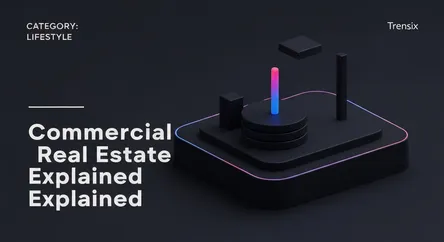Lifestyle
Commercial Real Estate Explained

Discover commercial real estate (CRE), property used for business. Learn why CRE trends are shifting and how they impact investments and the economy.
What is it?
Commercial Real Estate (CRE) refers to property used exclusively for business-related purposes or to provide a workspace rather than as a living space. This broad category includes everything from office buildings and retail centers to industrial warehouses and large apartment complexes. Unlike residential real estate, which is for personal housing, CRE is intended to generate income through capital gain or rental income. Its value is primarily determined by its ability to produce revenue for its owner.
Why is it trending?
The CRE market is in a dynamic state of flux. The rise of remote and hybrid work has fundamentally altered the demand for traditional office spaces, forcing companies to re-evaluate their physical footprints. Simultaneously, the explosion of e-commerce has created unprecedented demand for industrial properties like logistics centers and warehouses. Investors are also closely watching retail real estate as consumer habits shift, favoring experiential and mixed-use developments over traditional malls. Economic shifts and interest rate changes further fuel its trending status as a key economic indicator.
How does it affect people?
Commercial real estate significantly impacts daily life and the broader economy. It dictates where people work, shop, and receive services. A thriving CRE market can signal economic growth and lead to job creation in construction and property management. For investors, it offers a tangible asset class for portfolio diversification. Conversely, downturns in CRE, like vacant storefronts, can negatively affect local economies and community vibrancy. The ongoing evolution of CRE continues to shape our cities and workplaces.